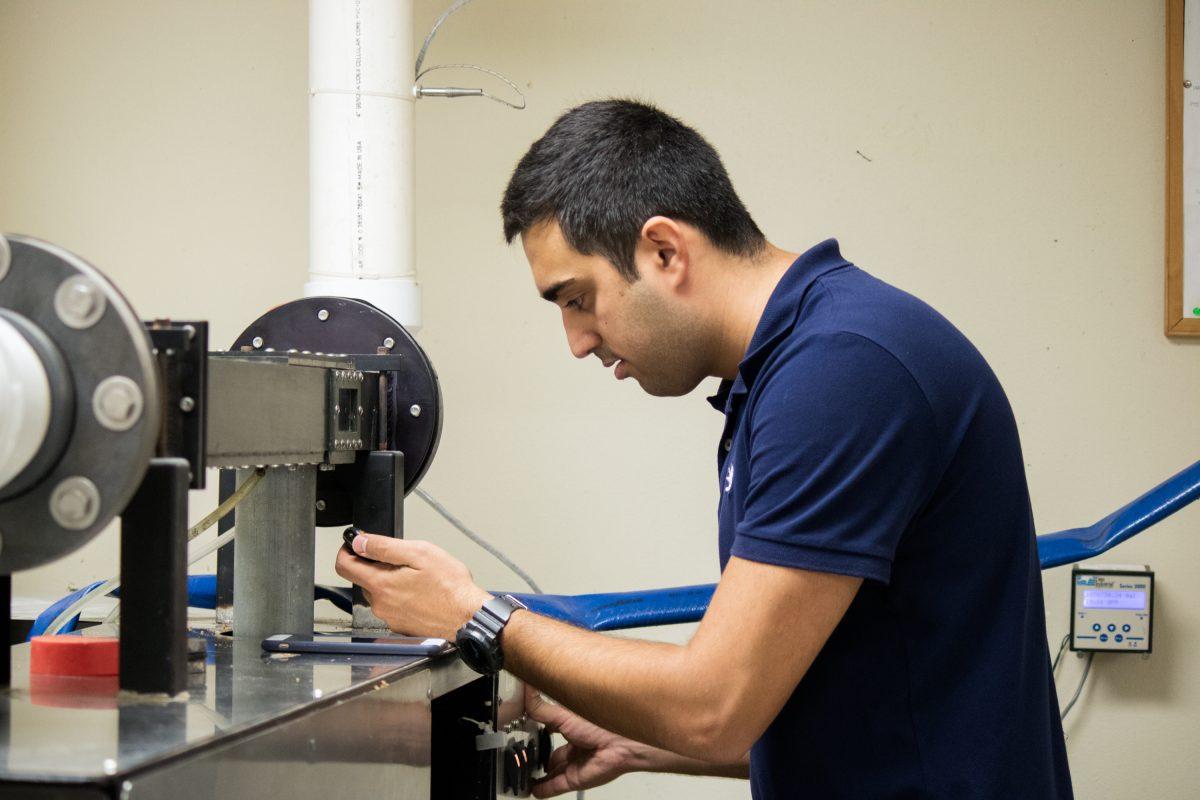Two months after Hurricane Harvey struck, professionals are continuing to research the catastrophic effects on the coast to learn how to improve construction in the future.
The Geotechnical Extreme Events Reconnaissance (GEER) Association, sponsored by the National Science Foundation, supported one team to study wind damage and two others to study geotechnical impacts. The GEER team Hurricane Harvey South led by Nina Stark, assistant professor of civil and environmental engineering at Virginia Tech, consisted of six other researchers from universities across the nation including Iman Shafii, Texas A&M civil engineering Ph.D. student. While the reconnaissance fieldwork was conducted from Sept. 2-5, research is still ongoing for the foreseeable future.
Reconnaissance research takes place immediately after a storm to collect data quickly in order to avoid losing perishable information. According to Stark, research included making measurements of erosion depths in some locations, collecting sediment samples and performing geotechnical tests.
“Regarding the GEER reconnaissance, the goal was to collect perishable data and observations associated to geotechnical impacts from flooding, storm surge and storm waves,” Stark said. “Regarding coming follow-on research, we are hoping to understand the performance and behavior of some soils and infrastructure more in detail to learn how to improve protection and mitigation of geotechnical impacts further.”
Harvey was an unusual storm that caused more damage than anyone could have expected due to an unexpected change in weather, according to Jean-Louis Briaud, civil engineering professor. Briaud assisted in the GEER research by providing briefings of information to the research team and serving as a home base if the team needed anything.
“A hurricane is typically 300 miles in diameter and travels at about 30 miles an hour so when it comes to the point it takes about 10 hours for the hurricane to pass by a given point,” Briaud said. “In the case of Harvey, the hurricane came up through the gulf and was traveling at about this speed and was about that big, but then it met a mass of air coming down from Canada and blowing downward and stopped it. So the hurricane was trying to travel through the land and go up North but it met this airflow and the hurricane stalled on the coast and that is what was devastating.”
While the extent of the damage was historic, many of the affected areas held up quite well, according to Stark.
“In my opinion, the extent of erosion, sediment relocation and deposition from flooding was severe in so many locations,” Stark said. “And associated damages reached from small changes of the river banks to large slides at river banks, scour, and impacts on close by infrastructure and structures. Important to notice was that these were not single locations, but was observed in many locations. Another thing that struck me was that beach access routes through dunes seem to be weak spots in the coastal defense line provided by dunes. While this is intuitively obvious, I have never seen the impacts being displayed that clearly.”
One of the most important parts of the ongoing research includes learning what type of flood Harvey caused, according to Briaud.
“The flood level was significant,” Briaud said. “We are trying to get some readings from from the United States Geological Survey gauges on the rivers to evaluate what kind of recurrence interval we had. The 100 year flood the 200 year flood. We are trying to find out what type of flood level it was.”
This reconnaissance research was Shafii’s first time working hands on in the field after a catastrophe. When he was a master’s student, Shafii researched erosion after hurricane Katrina.
“I brought up some samples to the Texas A&M Soil and Erosion lab which is where I work on my PhD,” Shafii said. “The research is ongoing and we are analyzing data. The primary goal of the GEER mission is to learn from these disasters.”
While the reconnaissance research has been completed, Stark said some of the most important work is still ahead.
“I expected a severe amount of damage,” Stark said. “At the same time, there were features that performed extremely well. For a direct site by site comparison of design expectations and performance, more research will need to be done. But it is important to do this research to be even better prepared for such events in the future.”
Engineering team studies coastal damage from Hurricane Harvey
October 23, 2017
Photo by Photo By Cristian Aguirre
Iman Shafii, civil engineering doctoral candidate, monitors a soil sample, recording data, ensuring that it remains flush, and making changes to the flow of water.
0
Donate to The Battalion
$2790
$5000
Contributed
Our Goal
Your donation will support the student journalists of Texas A&M University - College Station. Your contribution will allow us to purchase equipment and cover our annual website hosting costs, in addition to paying freelance staffers for their work, travel costs for coverage and more!
More to Discover










